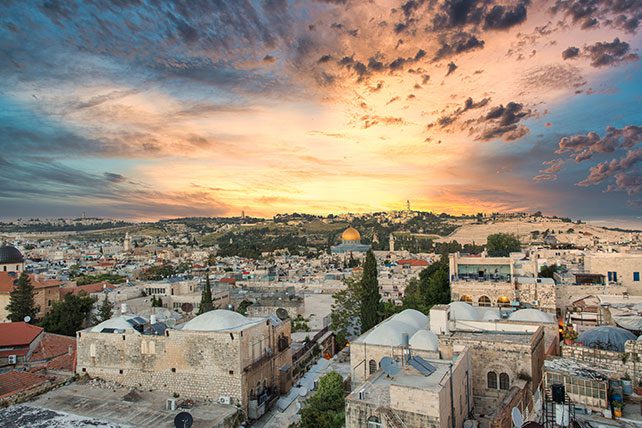The figure of Jesus Christ stands as one of the most pivotal and enigmatic in human history, inspiring billions with his teachings and life. However, discussions about his ethnicity and homeland often evoke a myriad of perspectives, influenced by historical, religious, and political narratives. We’ll address these questions with an objective lens, taking a look at the historical context of Palestine, the geographical setting of his life, and the perspectives surrounding his ethnicity.
The Ethnicity of Jesus: A Historical Perspective of Palestine
Addressing the question of Jesus’s ethnicity necessitates an understanding of the historical and cultural backdrop of his era. He was born (Luke 2) in the region known as Judea, part of the ancient land of Israel, around 4 to 6 B.C. The people living in this area were primarily of Semitic descent, sharing ancestry with other peoples of the Levant, such as the Phoenicians and Arameans.
The inhabitants of Judea during Jesus’s time identified themselves as Jews, practicing Judaism and sharing a common lineage traced back to the patriarchs Abraham, Isaac, and Jacob. Therefore, from a historical standpoint, he would have been considered Jewish, sharing the ethnic and religious identity of his fellow Judeans.
Geographical Context: Palestine in the Time of Jesus
During his lifetime, the region he inhabited was part of the Roman Empire, known as Judea. The term “Palestine,” while used in earlier Greek and Roman texts, was not commonly applied to this specific area until after the Bar Kokhba Revolt in 135 A.D., well after Jesus’s time. However, in contemporary discussions, the region is often referred to as Palestine when discussing the historical context of his life.
Jesus grew up in Nazareth, a town in the region of Galilee, which was part of the broader area of ancient Israel and, by extension, the ancient Near Eastern world. Galilee was known for its diverse population and cultural influences, yet the predominant culture and religion closely aligned with Jewish traditions and beliefs.
Palestinians in the Bible
The term “Palestinian” does not appear in the Bible, as it is a more modern geopolitical term. However, the Bible does mention various groups and nations that inhabited the land of ancient Israel and surrounding regions, such as the Philistines, Canaanites, and Samaritans. While these groups were part of the historical tapestry of the area, they are distinct from the modern definition of Palestinians, who are the Arab population residing in the regions of modern-day Israel and the Palestinian territories.
RELATED: How to Read the Bible as What It Is: Ancient Jewish Meditation Literature
Jesus’s Birthplace and the Question of National Identity
The birthplace of Jesus, Bethlehem, lies in the Judaean hills, about six miles south of Jerusalem. Historically, Bethlehem, like Nazareth, was part of the Jewish world, with its inhabitants observing Jewish customs and law. The question of whether he was born in “Palestine” or “Israel” is somewhat anachronistic, as these modern nation-state labels did not exist in his time. Instead, it is more accurate to say he was born in Bethlehem of Judea, within the Roman Empire.
Daily Life in Palestine at the Time of Christ
Daily life in the region during Jesus’s time was marked by agricultural pursuits, religious observances, and community life centered around the synagogue and the Temple in Jerusalem. The people of Galilee and Judea, including him and his family, would have lived in a society structured around Jewish customs, festivals, and the Mosaic Law. This context shaped his teachings, parables, and interactions with both the Jewish populace and the wider Roman world.

